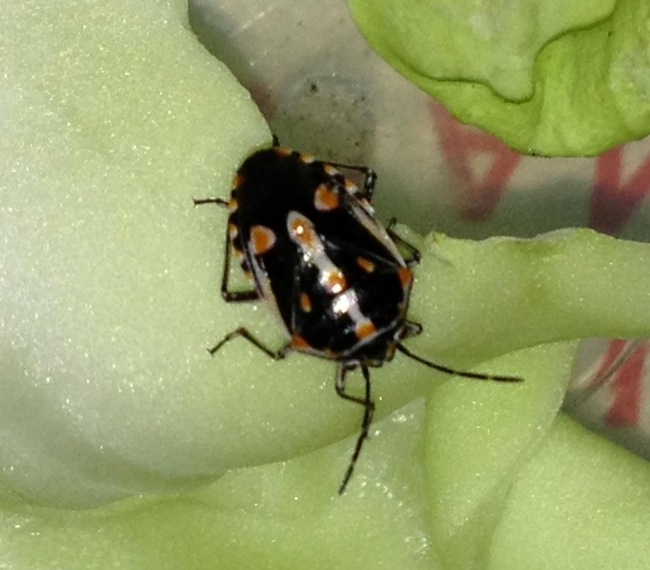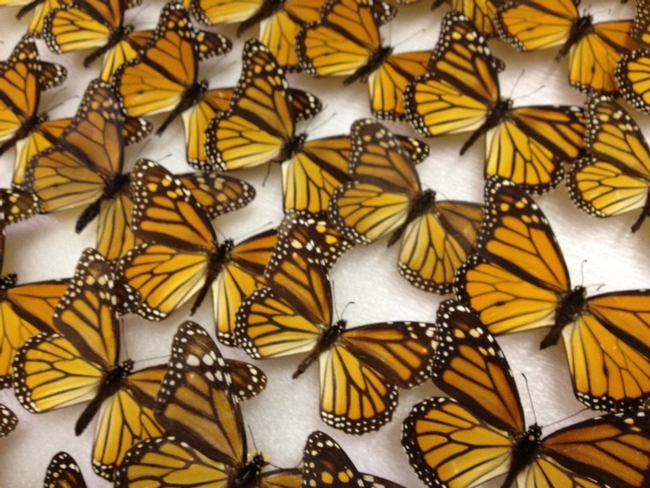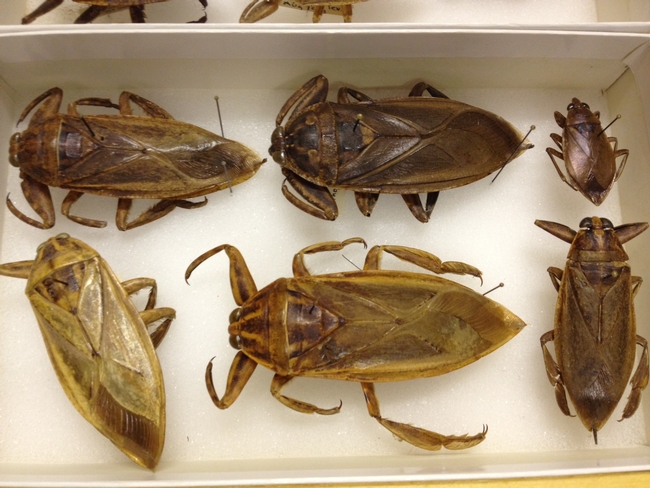- Author: Cris L. Johnson
The Entomology Association of Southern California will be holding a quarterly meeting at the Los Angeles Arboretum. These meetings address a variety of entomological related subjects relevant to local and state pest issues and are a great way to meet and share information with other individuals who are interested in this area of science.
Presentations for this meeting will cover:
- California's invasive slugs, future threats & some novel approaches for their control
- Asian Citrus Psyllid research at California Polytechnic University
- County Reports
- Natural history and IPM practices for use against an atypical stink bug, the Bagrada bug
- GIS database of land gastropods of California - native and not
This association has an annual membership fee of $45. Memberships cover annual registration for all four quarterly meetings in December, March, June and September.
If you are interested in attending:
Date: March 4, 2014
Time: 8:15 am - 3:00 am (presentations start at 9:00 am
Location:
Los Angeles Arboretum
301 North Baldwin Ave.
Arcadia, CA
Contact: Dr. Jim Downer, 805-645-1458 or ajdowner@ucanr.edu
See here for the agenda.
- Author: Cris L. Johnson

Pollination is crucial to the survival of much of our ecosystems and maintaining viable environments for them to thrive provides not only benefits personal outdoor space, but adds to the well being of the community at large.
This publication focuses on ways to make your garden and outdoor environment more attractive to pollinators by identifying pollinators and the plants and landscaping practices that appeal to them.
ANR Publication 8498 is free of charge and available as a downloadable PDF.
You can download this publication here.
- Author: Cris L. Johnson
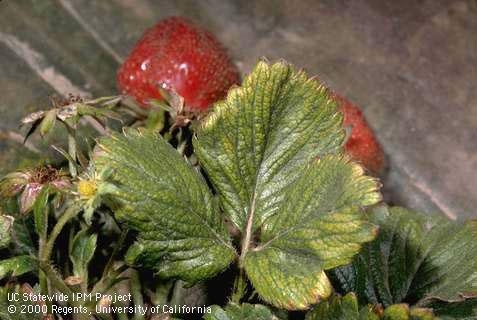
Anna Howell, UC Ventura County Cooperative Entension's staff researcher and entomologist, will join UC advisors and California agricultural experts for a "Mite Pest Management in Strawberry" meeting in Salinas, California.
Presentations include management of destructive mites, chemical and alternative options for control and identification of mites.
Speakers will also focus on the two-spotted spider mite and Lewis Mite. Anna Howell has been part of a research project studying the Lewis Mite which has been known to cause damage in strawberry and raspberry crops. The two-spotted spider mite causes damage to strawberry in coastal areas.
Growers interested in attending:
Date: Thursday, June 27, 2013
Time: 7:30 am to 11:00 am
Location:
UC Cooperative Extension Augitorium
1432 Abbott Street
Salinas, CA
Contact: Dr. Shimat Joesph, (831) 759-7359 or svjoseph@ucdavis.edu
View the agenda here.
- Author: Cris L. Johnson
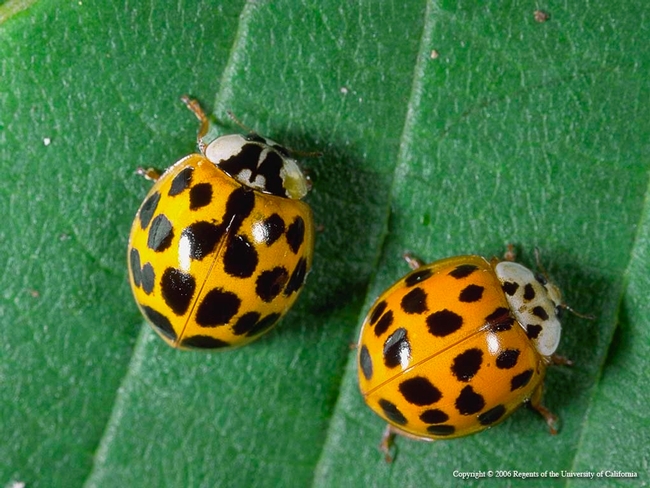
The meeting is a day of presentations and discussions on topics related to insects. Dr. Downer, an expert plant pathologist, will talk about insects that damage oaks. Bee expert, Anna Howell, will contribute a talk on using native bees for pollination.
Four hours of DPR CEU's are applied for.
Date: Tuesday, March 19, 2013
Time: 9:00 am to 4:00 pm
Location:
Los Angeles County Arboretum and Botanic Garden
301 N. Baldwin Ave.
Arcadia, CA 91007
Registration: At the door. Free for members. $15 for nonmembers.
Contact: Jim Downer, 805-645-1458
For more information see the flyer here.
Learn more about the Entomological Association of Southern California here.
- Author: Iqbal Pittalwala
Possibly, people could be divided into the following two groups: those who knowingly eat insects, and those who think they have never eaten them. Since I am still assailed by the odd nightmare in which I am bringing to my lips a well-cooked bug that suddenly springs to life, I decided to tackle my bug-food phobia by visiting entomologist Douglas Yanega of UC Riverside last week.
Yanega has eaten insects, even relished them. With no difficulty whatsoever he has ingested honey bees, termites, mealworms, crickets, grasshoppers, ants, June beetles, silkworms and even scorpions.
“These admittedly were not very tasty,” said Yanega, who is the senior museum scientist in the Entomology Research Museum, where he studies, identifies and catalogs insects. “In Thailand, however, I had queen weaver ants — a gourmet food there that tastes like either peanut butter or lemon, depending on which body part you’ve sunk your teeth into — and deep-fried mole crickets. Both were delicious!”
Eating insects is not unusual in Thailand, Yanega explained. Insects, a good source of highly digestible protein, are part of the diet in Korea, China and Mexico as well.
“You get more bang for the buck when you eat insects, where protein is concerned,” Yanega said. “True, the outer hardened shell is often not digestible, but the softer, internal tissues are. Of course, you want to avoid toxic insects. There are some that could kill you if you ate them.”
How does one know if an insect is toxic? In general, herbivorous insects tend to be more edible. Moreover, insects have evolved to alert other critters — and us! — that they are not suitable for consumption. Bright colors like red, orange or yellow juxtaposed with black on insect bodies are a sure warning from insects that you’d better stay away.
“Think of monarch butterflies, ladybird beetles, tiger moths. You never want to eat them,” Yanega said. “Some tiger moths will even make a noise to warn you to stay away. Other bugs will defensively ooze nasty secretions in your mouth, the moment you bite, to force you to spit them out and free them.”
Because few people experiment with eating insects, identifying those that are both edible and delicious can be a big challenge.
“You have, in the middle of the bell curve of insects, a whole lot that are edible but taste awful,” Yanega said. “And there are those at one end of the curve that are just toxic. But at the other end of this curve lie the prized ones: these are edible and tasty.”
In the United States, most people are culturally still averse to eating insects. If you travel to Mexico, however, you might eat stinkbugs, sometimes used to flavor food. Farther off, in Japan, you could enjoy wasp grubs and silkworm larvae. In the mainland parts of Southeast Asia, you can savor giant water bugs and mole crickets.
“In Laos, they eat just about any available insect,” Yanega said. “Some insects are eaten raw, sometimes with small parts removed. Other insects are served deep fried or grilled.”
According to Yanega, one way to get introduced to an entomological diet is to first dry out insects, and then grind them up to a powder.
“You can use this powder as a supplement,” he said. “It’s the easiest way to go about eating insects as food. You can mix the powder into, say, wheat flour to get 'insect-enriched flour.'
If you’re cringing, rest assured that most of us already eat insects unknowingly. Much of food coloring uses insects. The waxy coloring that coats candies is oftentimes insect-based. And a lot of fresh produce has a built-in level of “insect contamination.”
“As long as you are not allergic to an edible insect, you’re safe eating it,” Yanega said. “If you can get past your phobia or stigma of putting bugs in your mouth, you should have no difficulty in adding insects to your diet.”
Which is what most of us would have to do if we found ourselves stranded on an island and famished.
“Should that happen, never mind the brightly colored bugs,” Yanega said. “Instead, go after the ones that are cryptically colored, the ones that look as though they are hiding from something. They would be a much better bet."


